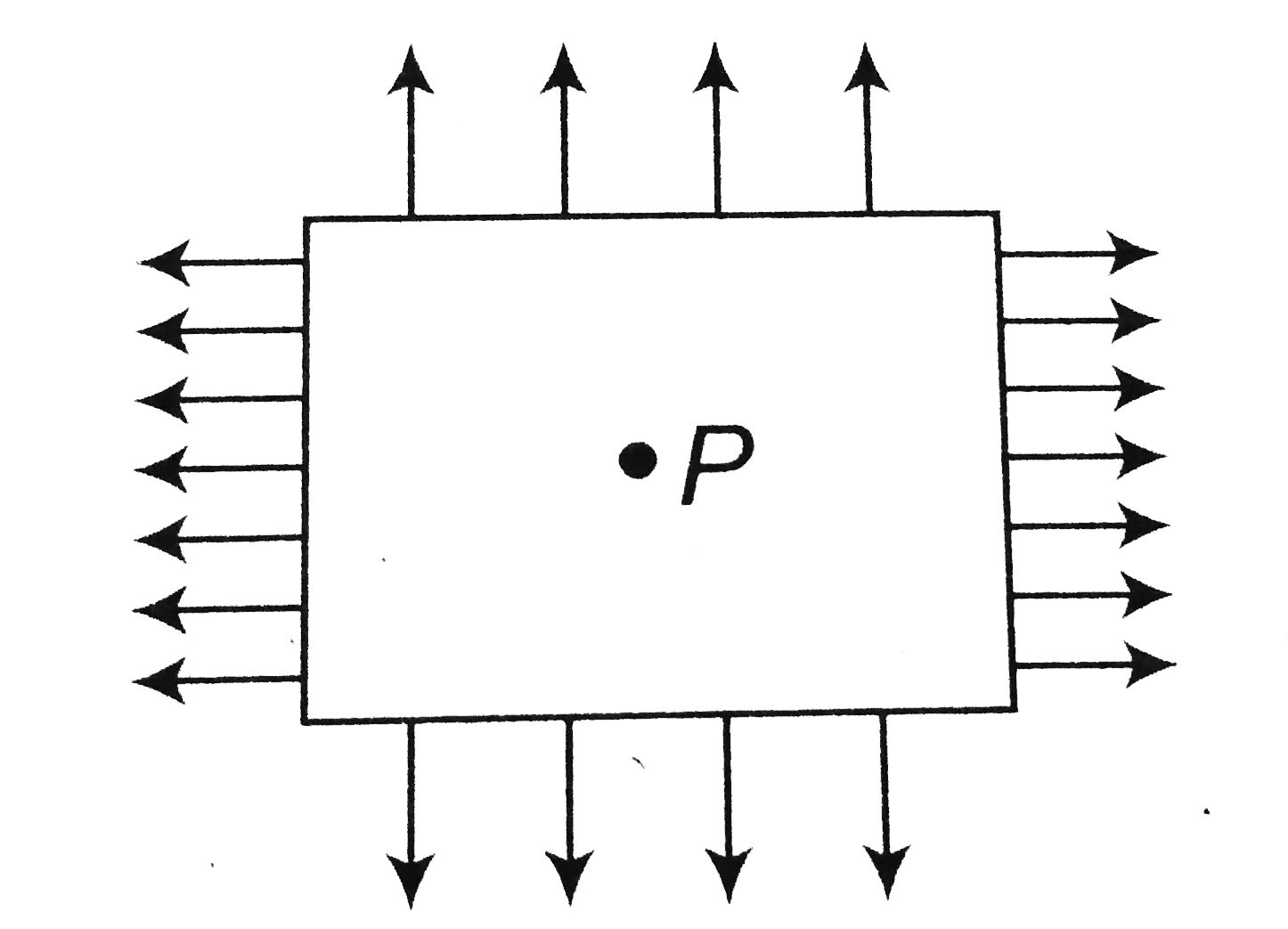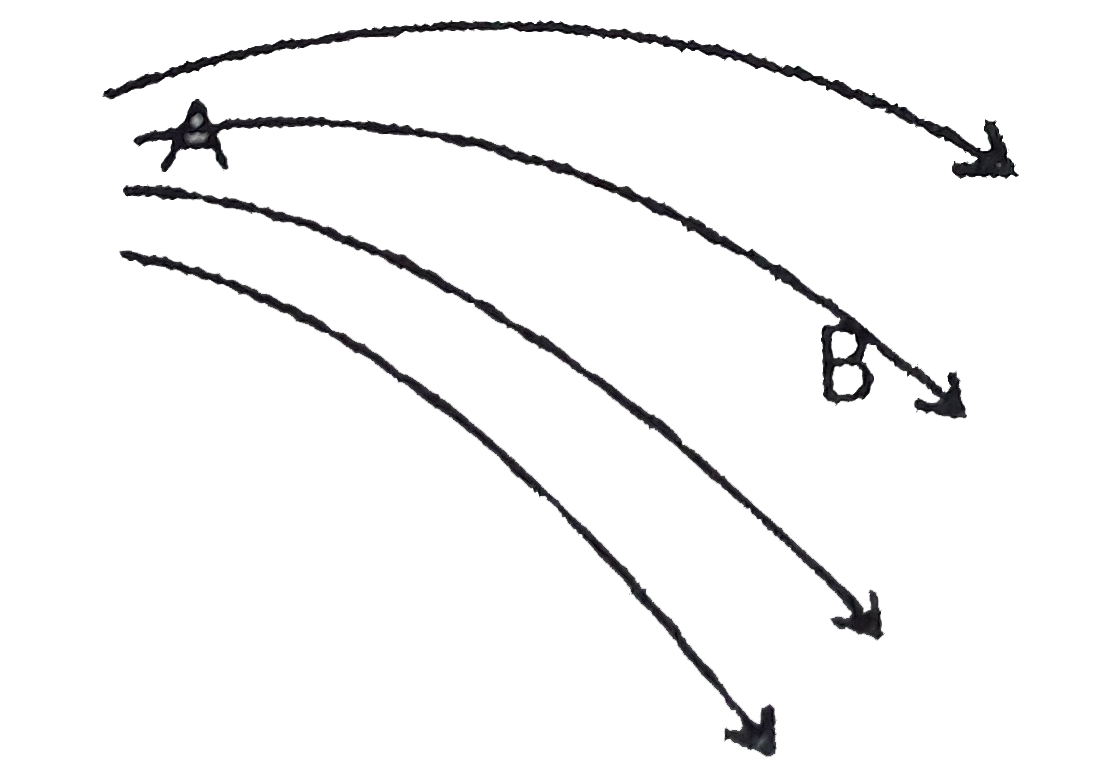(A) : No two electric lines of force can intersect each other
(R ): Tangent at any point of electric line of force gives the direction of electric field.
Both A and R are true and R is the correct explanation of A
Both A and R are true and R is not the correct explanation of A
A is true and R is false
A is false and R is true
The correct Answer is:A
To solve the question, we need to analyze both the assertion (A) and the reason (R) provided:
Assertion (A): No two electric lines of force can intersect each other.
Reason (R): Tangent at any point of electric line of force gives the direction of electric field.
1. Understanding Electric Field Lines:
- Electric field lines represent the direction and strength of the electric field created by electric charges. They originate from positive charges and terminate at negative charges.
2. Analyzing the Assertion (A):
- The assertion states that no two electric lines of force can intersect each other. This is a fundamental property of electric field lines.
- If two lines were to intersect, it would imply that at the point of intersection, the electric field has two different directions, which is not possible. Therefore, the assertion is true.
3. Analyzing the Reason (R):
- The reason states that the tangent at any point of an electric line of force gives the direction of the electric field at that point.
- This is also true because the direction of the electric field at any point is defined by the direction of the tangent to the electric field line at that point.
4. Connecting Assertion and Reason:
- Since both the assertion and the reason are true, we need to determine if the reason is a correct explanation of the assertion.
- The reason explains why electric field lines cannot intersect: if they did, it would lead to a contradiction in the direction of the electric field at the intersection point.
5. Conclusion:
- Both the assertion (A) and the reason (R) are true, and the reason (R) correctly explains the assertion (A).
- Therefore, the correct answer is: Both A and R are true, and R is the correct explanation of A.
Final Answer:
Both A and R are true, and R is the correct explanation of A.
---
Reason (R): Tangent at any point of electric line of force gives the direction of electric field.
- Electric field lines represent the direction and strength of the electric field created by electric charges. They originate from positive charges and terminate at negative charges.
- The assertion states that no two electric lines of force can intersect each other. This is a fundamental property of electric field lines.
- If two lines were to intersect, it would imply that at the point of intersection, the electric field has two different directions, which is not possible. Therefore, the assertion is true.
- The reason states that the tangent at any point of an electric line of force gives the direction of the electric field at that point.
- This is also true because the direction of the electric field at any point is defined by the direction of the tangent to the electric field line at that point.
- Since both the assertion and the reason are true, we need to determine if the reason is a correct explanation of the assertion.
- The reason explains why electric field lines cannot intersect: if they did, it would lead to a contradiction in the direction of the electric field at the intersection point.
- Both the assertion (A) and the reason (R) are true, and the reason (R) correctly explains the assertion (A).
- Therefore, the correct answer is: Both A and R are true, and R is the correct explanation of A.
Both A and R are true, and R is the correct explanation of A.
Topper's Solved these Questions
- ELECTRIC CHARGES AND FIELDSBook:AAKASH SERIESChapter:ELECTRIC CHARGES AND FIELDSExercise:Exercise-II
Explore 56 Videos
- ELECTRIC CHARGES AND FIELDSBook:AAKASH SERIESChapter:ELECTRIC CHARGES AND FIELDSExercise:Practice Exercise
Explore 57 Videos
- ELECTRIC CHARGES AND FIELDSBook:AAKASH SERIESChapter:ELECTRIC CHARGES AND FIELDSExercise:Assess Your Self
Explore 13 Videos
- DUAL NATURE OF RADIATION AND MATTERBook:AAKASH SERIESChapter:DUAL NATURE OF RADIATION AND MATTERExercise:PRACTICE EXERCISEX
Explore 42 Videos
- ELECTRIC FIELD AND POTENTIALBook:AAKASH SERIESChapter:ELECTRIC FIELD AND POTENTIALExercise:PROBLEMS (LEVEL-II)
Explore 26 Videos
Similar Questions
Magnetic lines of force may intersect each other.
View SolutionThe wrong statement about electric lines of force is
View SolutionDraw electric lines of forces due to an electic dipole.
View SolutionWhy don't two magnetic field lines intersect each other?
View SolutionElectric lines of force are as shown in the figure. Then potential at point P

View SolutionAssetrion: Electric lines of force never cross each other.
Reason: Electric field at a point superimpose to give one resultant electric field
View SolutionElectric lines of force about negative point charge are
View SolutionWhy do the electric field lines never cross each other ?
View SolutionAssertion : Magnetic force is always perpendicualr to the magnetic field.
Reason : Electric force is along the direction of electric field.
View SolutionSome electric lines of force are shown in figure. For points a and B

View Solution